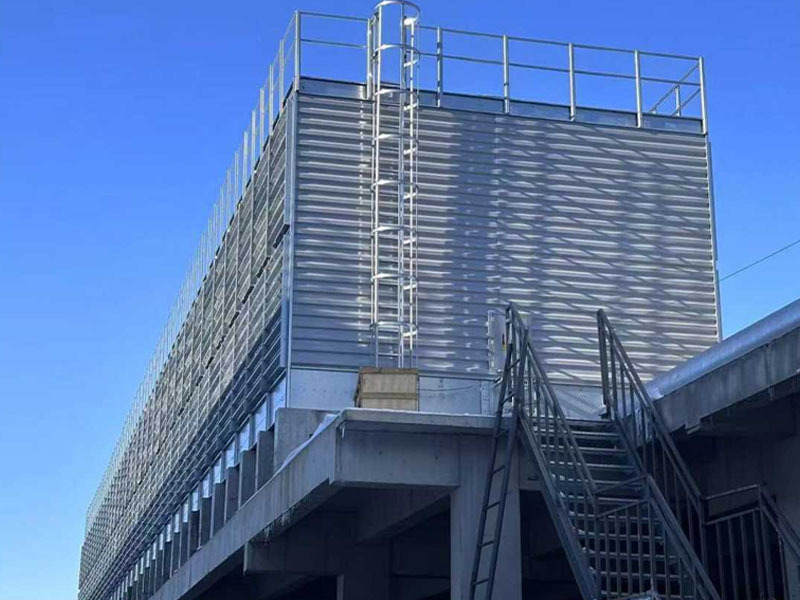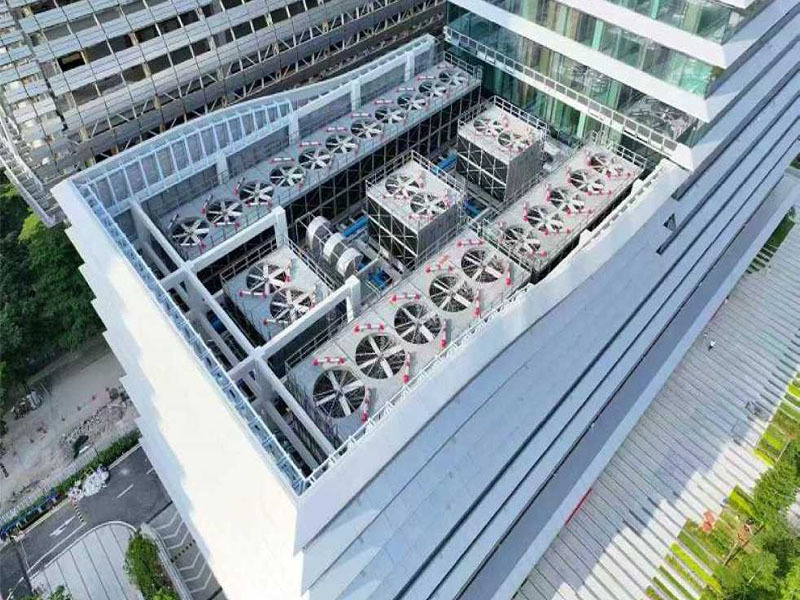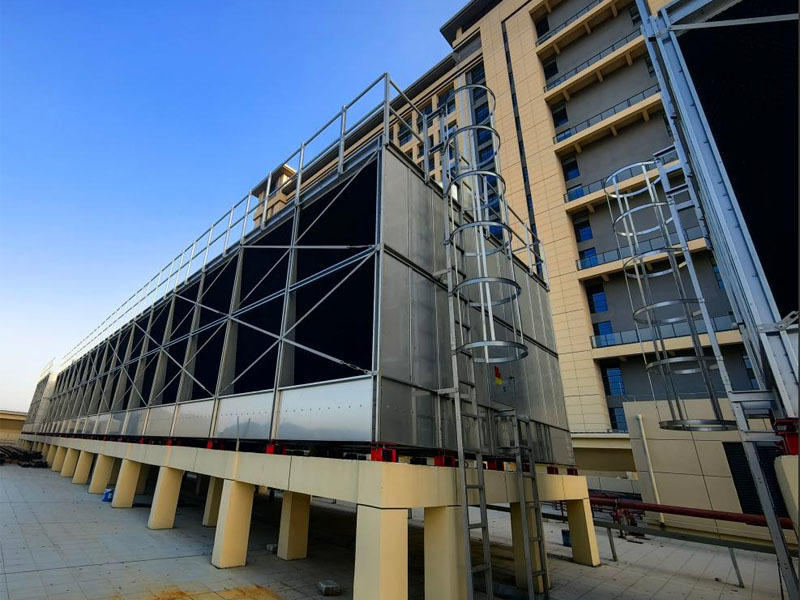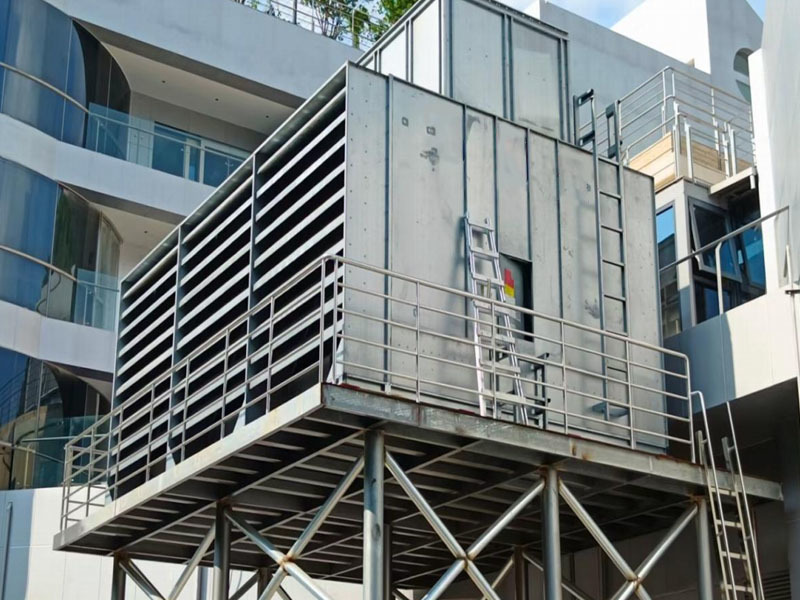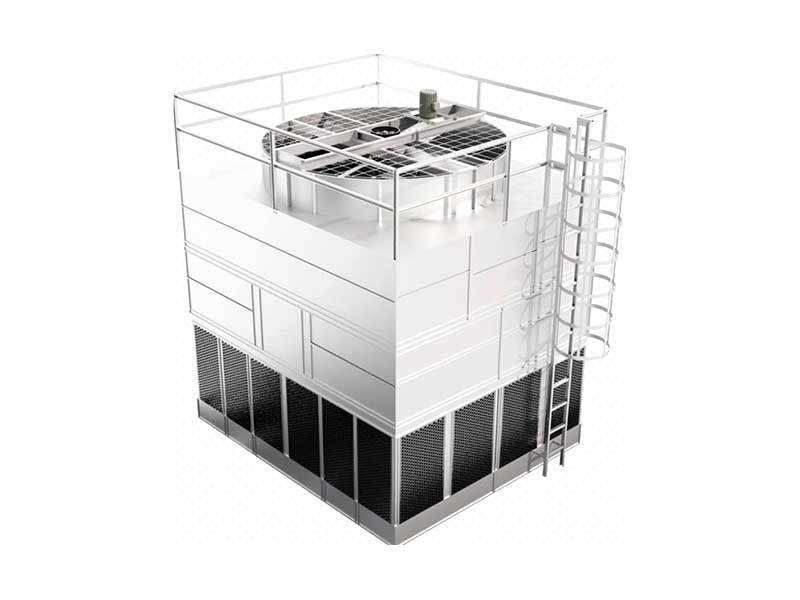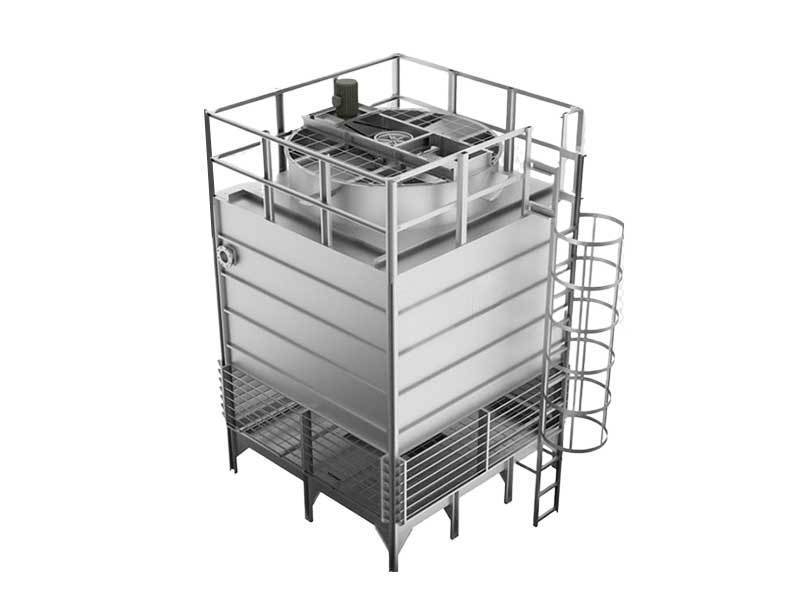Closed Counterflow Cooling Towers
Keywords:
Category:
- Product Description
-
### Closed-circuit Counterflow Cooling Tower
In modern industrial fields, the efficiency and stability of cooling systems are directly related to the quality and cost control of production lines. Closed-circuit counterflow cooling towers, as highly efficient and energy-saving cooling equipment, stand out among many industrial cooling solutions due to their unique design principles and significant performance advantages. This article will detail the working principle, structural characteristics, application advantages, and maintenance of closed-circuit counterflow cooling towers, providing reference for professionals in related industries.
#### 1. Working Principle of Closed-circuit Counterflow Cooling Tower
As the name suggests, the most significant features of a closed-circuit counterflow cooling tower are "closed-circuit" and "counterflow." "Closed-circuit" means that the cooling water circulates within the tower without direct contact with the outside air, preventing water pollution and evaporation loss; "counterflow" refers to the counter-current flow of cooling water and air within the tower, i.e., water flows from top to bottom, and air flows from bottom to top. This flow pattern effectively improves heat exchange efficiency.
The specific working principle is as follows: Hot water enters the packing area of the cooling tower through pipes and is evenly sprayed into fine droplets. Simultaneously, outside air is drawn in by the bottom fan and passes through the heated packing layer, forming saturated warm and humid air. Due to the sufficient contact between the droplets and the air during the counterflow process, heat is rapidly transferred from the water film to the air and discharged outside the tower with the air, thus cooling the water. The cooled water is collected in the water pan at the bottom of the tower and then pumped back to the system for reuse.
#### 2. Structural Characteristics of Closed-circuit Counterflow Cooling Tower
A closed-circuit counterflow cooling tower mainly consists of a tower body, fan, packing, heat exchange coils, water collector, water pump, and control system.
- **Tower Body**: Usually made of corrosion-resistant materials such as fiberglass reinforced plastic or stainless steel to ensure long-term operation without environmental impact.
- **Fan**: Responsible for providing air power to promote heat exchange between air and water. A highly efficient and energy-saving fan design can significantly reduce energy consumption.
- **Packing**: Located inside the tower, it provides a larger surface area for water droplets, enhancing the contact effect between water and air and improving heat exchange efficiency.
- **Heat Exchange Coils** (Some Models): In some special applications, closed-circuit cooling towers are also equipped with heat exchange coils to further cool or heat the medium.
- **Water Collector**: Located at the top of the tower, it effectively intercepts fine water droplets discharged with the air, reducing water consumption.
- **Water Pump**: Responsible for sending the cooled water back to the system to maintain circulation.
- **Control System**: Achieves automatic adjustment of parameters such as temperature, humidity, and flow rate within the tower to ensure stable system operation.
#### 3. Application Advantages of Closed-circuit Counterflow Cooling Tower
1. **Water Saving**: Because the cooling water circulates in a closed system, evaporation loss and water drift are avoided, greatly saving water resources.
2. **Environmental Protection**: Without direct contact with the outside air, it reduces the risk of water pollution and also reduces noise pollution.
3. **High Efficiency**: The counterflow design improves heat exchange efficiency, resulting in better cooling effects and lower energy consumption.
4. **Easy Maintenance**: Compact structure, small footprint, and because the system is closed, it reduces maintenance frequency and cost.
5. **Strong Adaptability**: Suitable for various water qualities and environmental conditions. Especially in cold regions, the closed-circuit design prevents freezing problems.
#### 4. Maintenance Suggestions
To ensure the long-term and efficient operation of the closed-circuit counterflow cooling tower, regular maintenance is crucial:
- Regularly check the operating status of the fan and water pump, promptly clean up dust and debris, and maintain smooth ventilation.
- Observe the condition of the packing. If there is blockage or aging, it should be replaced in time.
- Check and clean the water collector to ensure that it effectively intercepts water droplets and reduces water consumption.
- Regularly check the water quality and add an appropriate amount of water stabilizer according to the water quality to prevent scaling and corrosion.
- When not in use during winter, necessary antifreeze measures should be taken, such as draining the water from the system or adding antifreeze.
In summary, closed-circuit counterflow cooling towers play an important role in modern industrial cooling systems due to their high efficiency, water saving, and environmental protection features. Through scientific and reasonable maintenance, not only can the service life of the equipment be extended, but the overall performance of the system can also be further improved, contributing to the sustainable development of enterprises.
Inquiry
Service Hotline:
+86-138 2574 5855
+86-189 0261 0628
E-mail:dykj1688@yeah.net
Address: Guangdong Province, Huizhou City, Boluo County, Longxi Town, Longyuan Avenue, Dongyan Technology Industrial Park
Follow us

Scan with your phone
Copyright © Guangdong Dongyan Cooling Equipment Co., Ltd. All rights reserved.
Power by:www.300.cn | SEO | Privacy Policy

